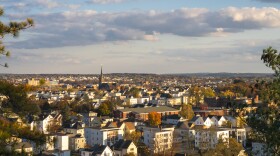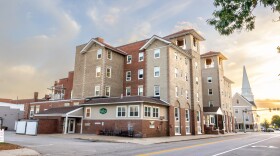New Hampshire’s housing market “presents extraordinary challenges for renters and homebuyers." That’s according to the latest Housing Market Report, issued by New Hampshire Housing.
With interest rates on the rise and housing inventory low, mortgage applications are dropping.
The rising cost of materials — which according to the National Association of Home Builders, are up 19 percent on the year, and by close to 36 percent since the start of the pandemic — are making it more expensive to build.
“When the influence of inflation on the price of staples such as groceries and gas are added to this mix, we can begin to understand how severely these market conditions are affecting the housing choices of low and middle income New Hampshire residents,” said Rob Dapice, CEO and executive director of New Hampshire Housing.
But while some factors fueling the high cost of housing costs are new, one core issue, the lack of housing inventory, is not.

According to the report the state is more than 20,000 units shy of what’s needed to achieve what the 5 percent rental vacancy rate indicative of what Dapice calls a “balanced market.”
New Hampshire’s current vacancy rate for rentals is 1 percent.
The median sales price on houses in New Hampshire, which now exceeds $400,000, continues to outstrip what many people can afford.
With house prices that high, essential workers, including firefighters, teachers and nurses, earning median wages for their jobs assuming a 20 percent down payment, would be unlikely to qualify for a 30-year mortgage.
Second home purchases in New Hampshire, meanwhile, continue to climb.
According to the report, the proportion of loans issued to purchase second homes increased in every New Hampshire county between 2018 and 2020.
In Carroll County, loans on second homes accounted for nearly half of all new mortgages.
Second home loans accounted for about a third of new mortgages issued over the same period in Grafton County; the numbers were similar in Coos and Belknap Counties.









